#chromatic dragon d&d
Explore tagged Tumblr posts
Text

the Monoliths consumeth
Also if you have ever wondered what my process looks like compressed down to 30 seconds
#my art#Bro why tumblr got to eat the colors like that#Also when I first tried to cue this the post just kind of#Evaporated#i don’t think my iPad was happy I tried to upload the speedraw#2024#speedpaint#Speedraw#cw flashing images#cw eyestrain#digital art#procreate#Art#dragon#red dragon#dragon art#red dragon d&d#chromatic dragon d&d#forgotten realms#Far realm#Slime#slime monster#monolith#ooze#space#space art#personal favorite
50 notes
·
View notes
Text


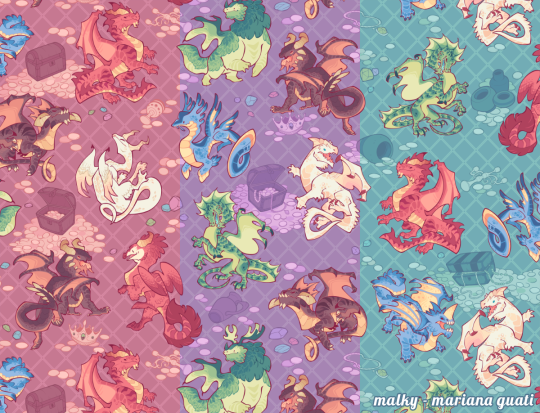
• Redbubble: (Red Pattern) (Purple Pattern) (Teal Pattern)
•TeePublic • INPRNT • Wallpapers • InkedGaming Chromatic dergs released
786 notes
·
View notes
Text

Blue dragon from D&D
-2917
#art#traditional art#sketch#daily sketch#ballpointsketch#ballpointpen#fantasy art#fantasy#fantasy creature#dragon#blue dragon#chromatic dragon#dungeons and dragons#d&d#d&d creature#d&d art#d&d dragon#d&d monster#dnd#dnd art#dnd monster#dnd dragon
60 notes
·
View notes
Text

my aevendrow paladin of eilistraee malarra hun'rahael <3
#shes so over the campaign and she just got there.#malarra; realising theres a fucking chromatic dragon on the island doing science experiments: damn never should have left the underdark huh#dungeons and dragons#d&d#drow#paladin#eilistraee#aevendrow
148 notes
·
View notes
Text

AD&D - DL6 - Dragons of Ice Cover Art by Larry Elmore
#AD&D#Advanced Dungeons & Dragons#Dungeons & Dragons#Dragons of Ice#Dragonlance#Krynn#Covers#Cover Art#Fantasy#Art#Larry Elmore#White Dragon#Chromatic Dragon#Dragon#TSR#WotC#Wizards of the Coast
45 notes
·
View notes
Text





Little chromatic dragon stickers! The good designs.
14 notes
·
View notes
Text



More D&D NPCS :)
#chromatic crusaders#my art#dnd campaign#dnd character#dnd#dnd art#dungeons and dragons#d&d#rpg#tabaxi#not my oc#my dm is the coolest ever#I’m so attached to all of them#character design
34 notes
·
View notes
Text

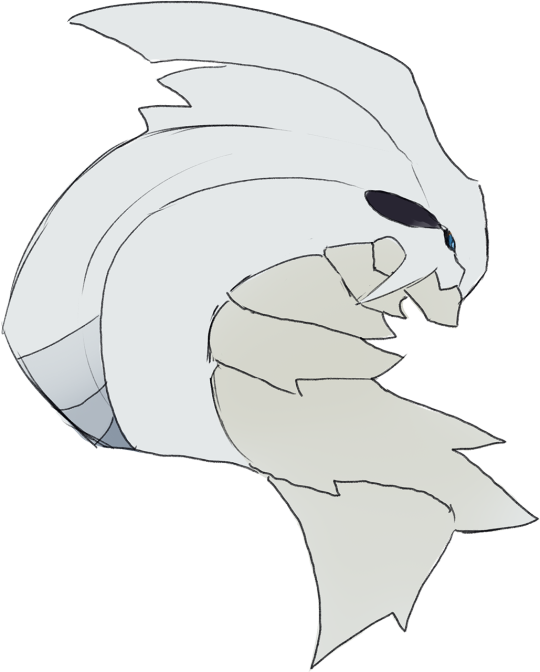
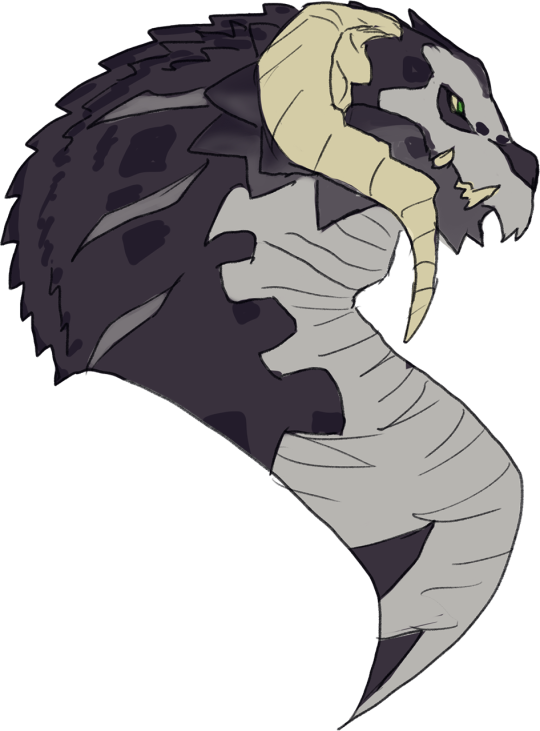

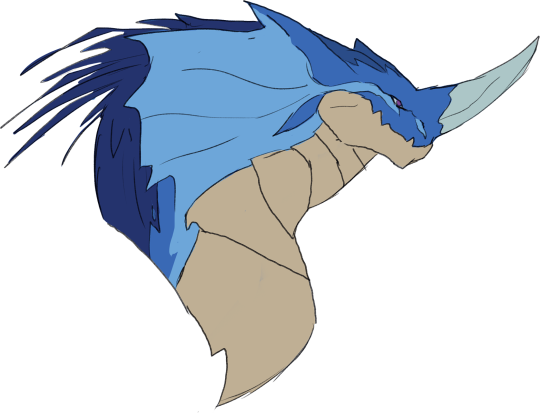

The Chromatic Dragons from D&D
I wanted to try my own take on them since I did the metallic dragons and Bahamut. Finally sat down to do it.
I tried to make the black dragon more crocodilian. Overall, I tried to make them seem less "evil" and more like characters. Green in particular I could see peering over a pair of glasses. Red I didn't change much, just tried to put in some tiger stripes to make them seem more "apex."
I'm very happy with Blue, I really like how I made them look. But what i'm happiest with is White. White in the D&D lore isn't very compelling, so I took a lot of liberties. It took a lot of time to get a design I'm happy with, but I really like how this looks. uwu
I imagine White dragons are more solitary. They have a reputation for not being very talkative so when they do interact with another intelligent being, they can come off as clumsy because they haven't been practicing their common. White dragons evidently also hunt whales sometimes, so I thought if they're ok with going in arctic seas and hunting marine wildlife, maybe they should have a little bit that makes them look more orca-ish.
I tried to model them a bit after knights or vikings. Should also have tusks since they're a cold weather predator. I also wanted this ones neck scales to look a bit ragged like a beard.
Hope ya'll dig!
70 notes
·
View notes
Text

Actually Drakenstein is the mad cultist creator. This is Drakenstein's Monster.
I had an idea for a potential future D&D Character. Probably using a normal Red Dragonborn as a base and making them a Way of the Ascended Dragon Monk so they can use all of the Breath Elements. I imagine this would also play into their arc as a character, learning to master their body to feel more complete and not just a composite monster
Meanwhile Tiamat keeps trying to contact him for some reason and convince him to do sin.
#my art#art#traditional art#traditional drawing#traditional illustration#traditional sketch#fantasy#dragon#magic#elemental dragon#d&d#d&d character#d&d art#dungeons and dragons#dnd character#dungeons and dragons character#dnd art#dragonborn#chromatic dragon#red dragon#black dragon#white dragon#green dragon#blue dragon#frankenstein#frankenstein's monster#frankenstein's creature#Monster#Cuffed#Chained
8 notes
·
View notes
Text
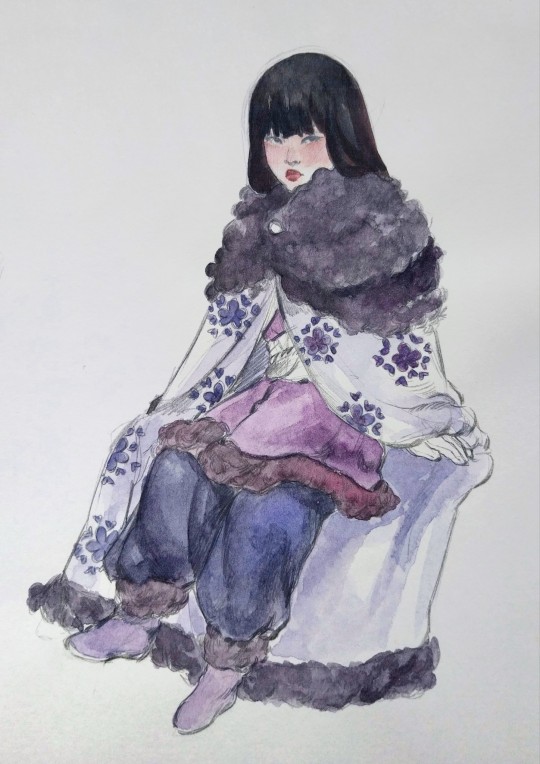
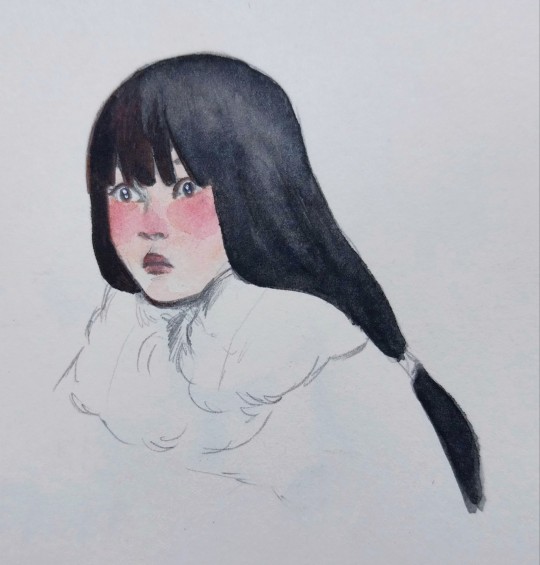
Yori, my 9 year old wizard in his cute little snow gear.
Yori after accidentally incinerating a guy.
#yes it was a party member#sorry about that#sorry about the instakill my dragonborn companion#children shouldn't play with chromatic orbs#but i did kill the mimic also#i want to stress that#art#traditional art#watercolor art#character design#oc#original character#artists on tumblr#gansai tambi#dnd#dungeons and dragons#d&d#wizard#yori
38 notes
·
View notes
Text

ICINGDEATH Gargantuan White Dragon
Dungeons & Dragons
#Dungeons & Dragons#dnd#d&d#rime of the frostmaiden#icingdeath#Ingeloakastimizilian#white dragon#chromatic dragon#dnd icingdeath#dnd dragon#dragon#dnd fanart#dragon fanart#drawing#fan art
4 notes
·
View notes
Text
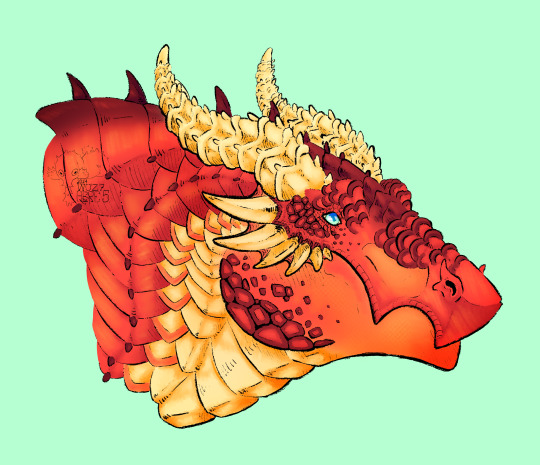
Cabin fever made me draw a chonky red dragon and watch videos about cults instead of doing my homework
#my art#procreate#digital art#dragon#2024#red dragon d&d#d&d dragon#chromatic dragon d&d#forgotten realms#personal favorite#fanart#Illustration#scaly#furry#furry art#sfw furry#scaly art#Art
70 notes
·
View notes
Text

Red dragons, referred to by sages as draco conflagratio horribilis, and sometimes flame dragons, fire wyrms, and mountain dragons, were a breed of chromatic true dragon. They were covetous, evil creatures, interested only in their own well-being, vanity and the extension of their treasure hoards. They were supremely confident of their own abilities and were prone to making snap decisions without any forethought. The largest and most powerful of the chromatic dragons, and just the worst not counting Tiamat, red dragons were also the most fearsome and cruel. These dragons delighted in ruin, death and destruction. They breathed a cone of fire. In countless lands, they were considered the archetypal villainous dragon of legend and fable, exemplars of all their most notorious traits, and the red dragons thought so too.
“Rapacious, cunning, and destructive, red dragons are Tiamat's favored children, embodying the worst that dragonkind has to offer.” — Jothan Ironspell, from another world
Red dragons were physically distinguished by their enormous size and wingspan, which was the widest of all dragons, both in absolute size and relative to body length. The outermost alar phalanx was extremely long and made the wing appear to taper, while the trailing edge was the longest section. The trailing edge joined the body behind the rear legs and partway along the tail.
And of course they were recognized by their scarlet and crimson scaled hides. A wyrmling had small, bright, and glossy scarlet scales (becoming pink on its belly), which turned dull and a deeper red by the time they were young dragons. In older dragons, the scales grew thicker and larger, and as tough as metal. In contrast to their red hide, their wings and neck frills turned a purple-gray, ash-blue, or blue-black toward the edges, similar to metal scorched in a fire, which darkened as they aged. The pupils of their eyes faded with age, such that especially old red dragons had eyes that seemed to be orbs of molten lava.
A red dragon had two large horns upon their head, which pointed backward toward their wings. These horns, which were big enough to be noticeable from below, could be either straight or twisted and any color from white as bone to black as night. They had smaller horns on their chin, cheeks, lower jaw, and in rows over their brow, as well as on their beak-like snout. They also had frills around their ears that often combined with their cheek horns as they got older and a backward-sweeping frill running down their necks and spine, from just behind the head to the end of the tail. The frills around the dragon's internal ears assisted its hearing, by collecting sounds and ascertaining directions. A red wyrmling had the two main horns, but the others were only stubs.
They smelled of smoke, sulfur, and pumice. Their bodies were so warm that the air around them occasionally shimmered as in a heat mirage while their blood was, when outside its body, hot enough to produce steam. Smoke blew from their nostrils constantly. When a red dragon was enraged, flames flickered in its eyes and nostrils.
The vanity of red dragons was often revealed in their prideful postures and the looks of disdain with which they regarded all others.
A hatchling had a 1‑foot-long (0.3‑meter) 3‑foot-long (0.91‑meter) body and 3‑foot-long (0.91‑meter) tail, while an adult had a body length of around 12 feet (3.7 meters) to 18 feet (5.5 meters) and a tail length of around 17 feet (5.2 meters) to 21 feet (6.4 meters). The biggest great wyrms grew to 35 feet (11 meters) or 36 feet (11 meters) long in the body, with tails 26 feet (7.9 meters) or even 50 feet (15 meters) long. However, earlier estimates had adults as big as 80 to 99 hands (8.1 to 10 meters) in body length and 68 to 87 hands (6.9 to 8.8 meters) in tail length, and great wyrms as big as 174 to 183 hands (17.7 to 18.6 meters) in body length and 162 to 171 hands (16.5 to 17.4 meters). As red dragons of the same age did not differ much in length, one considered small would be slender and wiry while one considered huge would be fat, muscular, or thick of body and limb. A healthy red measuring 40 feet (12 meters) in body length would weigh 5,000 pounds (2,300 kilograms).
A dragon egg could be identified as belonging to a red by the very faint reddish spots seen when held in front of an intense white light.
“To have is nothing, to keep is all.” — A red dragon saying
Out of all dragon kind, reds were the most avaricious and were constantly looking to expand their hoards with treasure, no matter whose it already was, and they were the most obsessive collectors. They valued material wealth more than anything else—if it was worth something, they wanted it. They adored gold more than any other precious metal, loving its look and sound, and gathered gold pieces and treasures to make up much of their hoard. They also collected gems of red and fiery hues, like rubies and fire opals. They did prefer things made of metal or stone that would withstand the heat of their lairs and flame and last through the ages; flammable goods of cloth, leather, or paper were less desirable. Females had a greater preference for treasures with reflective surfaces and they generally had little interest in art. Other than that, they were so greedy they generally didn't care what they collected, and while individual red dragons could have certain preferences, there were no common trends across the species. They accumulated amazing hoards and showed them off in pride as a show of their own superiority, with a particular love for anything taken from a slain rival. Treasure placement, however, was practical and tactical: coins comprised its bed, gems and shiny things were placed in very visible locations but they didn't surround themselves with mirrored surfaces, and humanoid-usable things like armors were stored well back, so as to lure thieves deeper in. Valued trophies were stored and displayed and gloated over separately. Massive stones could be used to seal particular treasures in hollows. They knew the value, origin, and precise location of every piece of treasure in their hoards, and remembered well how and when they'd claimed it. Losing even one coin or tiny trinket could cause a red dragon to fly into a rage and hunt down and mercilessly destroy the supposed thief. If they could not, then they would rampage across the land, slaughtering all they encountered and devastating local settlements where a thief might hide they could calm down.
Red dragons were known for their swift and fiery tempers—if angered, they would explode into a destructive rage and become even more impulsive and vengeful. They never forgave even the most minor offense, theft, or infraction, and would kill the offender or, if they were unavailable, instead raise havoc to inflict their outrage on everyone else. They would kill even on a whim. Such rages were in part due to their fragile pride and feeling that any loss, insult, or defeat meant a loss of status if not addressed—causing chaos and destruction assuaged wounded pride and mitigated lost status. Their rage could only be quelled with blood and death or great tributes of riches.
“How can one imagine anything more magnificent than… a dragon, the paragon of creation?” — Bheilorveilthion, a red wyrm of another world.
They were incredibly vain, even by dragon standards, and were supremely arrogant. They thought themselves chosen by Tiamat herself to reign in her stead, with all the world their dominion and all the beings in it their subjects, while all other breeds of dragon were inferior. Red dragons believed they were the pinnacle of draconic nature and all other dragon species had departed from this purity. They valued vengefulness, rapaciousness, avarice, and ferocity above other traits and recognized these traits in themselves with pride. Thus, maintaining their status among their fellow red dragons was their main focus.
Preferring their own company and engaging with others only when it had purpose, they were solitary creatures and cared little for news of other types of dragons, though they did look for news of other red dragons in their area and of affairs in the world in general. They used other charmed creatures as messengers, informants, and spies to bring them information, paying particular interest in the deeds of fellow red dragons, with whom they always competed for status. If they believed their own achievements and possessions to be greater than these other red dragons, then they stayed in their lairs, smugly congratulating themselves. However, if they learned that the achievements or possessions of the other red dragons were greater than their own, then they would fly into a jealous rage, decimating the surrounding area until they believed that they had outdone their rivals. The dragon became much less cautious and foolish during this time and much more likely to underestimate their foes.
In turn, a red dragon would take efforts to ensure that they were seen as superior to every other red dragon in the area. They would often burn down only half a village or let a single adventurer flee from a battle so that word of their power spread throughout the region. They would also boast about their magnificent hoards. However, not only would this anger other red dragons and attract rivals looking to gain status but it was also like a shining beacon to adventurers, dragon slayers, and treasure hunters.
Red dragons believed that if a being was not strong enough to protect what it had, then it did not deserve to keep it. This applied not just to treasure, but to life. They despised weakness among their own kind. If one ever found out that another of their kin showed any signs of fragility, either by getting badly wounded or becoming senile or weak in old age, then local red dragons would descend on the lair, stripping it clean and usually killing the owner.
Reds were also highly territorial. They were constantly on the lookout for intruders in their territory, and especially other dragons encroaching on it, which was cause for death. Entering an area a red considered its domain was just asking to be attacked, especially if it was a rival dragon. If the trespasser was another red dragon, then conflict was inevitable and the fighting the most vicious, as neither would dare show weakness to the other as a point of pride. Thankfully, most other species were smart enough to flee if they realized the area belonged to a red dragon. Rarely, red dragons would adopt a protective yet patronizing manner towards creatures they saw as inferior that lived within their self-imposed borders. A few liked to set themselves up as rulers of communities within their territory, enjoying the feeling of power, but they reigned as tyrants, demanding obedience and using threats to gain it, and killing or destroying those that did not comply. In their view, humanoids were a renewable resource. Communities in or around a red dragon's territory could appease it with tributes and sacrifices. Some even required worship, but others preferred more covert means of control, wherein they were the secret puppet-masters pulling the strings in a network.
Red dragons hated any authority other than their own. They never asked elders for advice or information, even if doing so would save their lives as, to them, admitting they needed something their elders had was the same as putting themselves under their authority.
Red dragons had a habit of playing with their food. For example, some would enjoy talking to their victims before they ate them. They also disliked getting wet. In fact, in many ways, they were most like housecats.
A female red dragon was, if anything, even more willing to fight, particularly other female red dragons, with food and treasure as secondary priorities. They were less likely to surrender or yield if defeated. They were also more intolerant of other creatures and more territorial, and while a male might accept a bribe to let a victim escape, a female red would decline, eat the victim, and take the bribe. However, she could be impressed by flattery.
It was of course possible for a red dragon to not conform to the above evil habits. For example, a young red might find itself sickened by the cruelty its older kin inflicted on innocents and, after some contemplation, depart for a remote area where it could make a life on its own terms (becoming chaotic neutral) or even try to stop or undo them somehow (moving toward neutral or even lawful and good). These rogue red dragons were rare, and were liable to be attacked by their fellows, though no more so than normal.
Red dragons expelled an extremely devastating cone of fire. For an adult, this blast could be from 9 feet (2.7 meters) up to 50 feet (15 meters) or 60 feet (18 meters) in length and breadth, or even as long as 90 feet (27 meters) and 30 feet (9.1 meters). Its raw elemental fire could burn flesh and heat metal and, for ancient red dragons, could even overwhelm magical protections against fire.
They were naturally resistant or even completely immune to fire, but vulnerable to cold.
Like any dragon, and in addition to the common powers of chromatic dragons, red dragons gained an array of magical powers as they aged, though accounts of these varied. In one version, a young red dragon could affect normal fires thrice a day, a juvenile could use pyrotechnics thrice a day, an adult could heat metal once a day, an old red dragon could make a suggestion once each day, a very old one could use hypnotism once a day, and a venerable red could detect gems, kind and number three times a day up to a range of 100 feet (30 meters). In a later accounting, a juvenile could cast locate object once a day or more often as they got older, while an old red dragon could use suggestion, an ancient one could use find the path, and a great wyrm could discern location. They did not possess innate psionics.
Similarly, red dragons could learn and cast new spells of their own, similar to a sorcerer. They naturally favored fire-based spells as well as spells of detection and divination to help them analyze magic and appraise valuables.
They were skilled in appraisal, deception, and jumping, because, although they flew quickly, they were not very maneuverable. They could accurately estimate the value of any treasure or trinket, down to the last copper piece. They also had good hearing.
With its keen senses, a red dragon could track its prey like a ranger. This was especially effective if it had tasted a creature's blood beforehand and it was still wounded.
“Battle is a dragon's natural element; it is made for combat. It has teeth like spears, claws like scimitars, wings like hammers, and a tail like a battering ram. Lesser beings cower in its presence, and its breath fells armies.” — Munwithurix, a red dragon of another world
Highly confident combatants, a red dragon would, on sighting a potential foe, decide in an instant whether to attack. They rarely stopped to size up a foe or make a plan, instead relying on a general strategy they'd figured out earlier, often over years and covering every imaginable situation, and picking it on the fly. Usually, though, they just flew into their foes and blasted them with fire, then used their claws on whoever was left. If attacking small, lone, and vulnerable creatures, they preferred to land and slay them with claw and fang, rather than use their flame and risk destroying whatever valuables they might have, but not if it meant defeat or death. Against large groups, they would use spells and fire breath before landing. Like any dragon, they could fight with their claws, teeth, wings, tail, and just sheer weight. They loved this chance to show off their strength, but weren't shy to use their fire breath either.
Though they fought just as well in the air as on the ground, a red dragon was not agile in flight, so they usually elected to land and fight on the ground when appropriate, where they showed remarkable mobility and grasp of tactics. They would jump from point to point or fly short distances to seize an advantageous location from which to cast their magic or breathe fire.
They were not above trickery, either. For example, a red dragon might use polymorph self to disguise itself as a fire giant and demand tribute from travelers in a mountain pass it claimed. Charmed beings and minions could be ordered to support the story. Those who tried to fight the so-called giant would be surprised by a dragon. In turn, a red dragon could be tricked or baited into a trap by exploiting its love of gold.
Despite its ferociousness and unwillingness to retreat or compromise, a red dragon was not mindless nor suicidally reckless. It had enough of a sense of self-preservation to know when not to attack or to break off combat against a superior opponent, albeit reluctantly and if it could retain its pride and status in doing so; retreating hurt their pride most of all. Nevertheless, after first blood had been drawn, they were much less likely to retreat, even if it was an option. Their overwhelming pride led more red dragons to fight to the death than any other chromatic dragons. In particular, the fearless and bloodthirsty red wyrmlings lacked the sense to flee and had no clever tactics to back them up, so they usually fight and win or die trying. However, they valued their sight over other senses, and a blinded red dragon was most likely to retreat or, if trapped, try to bargain or beg for its life, but not without lashing out at every sound and smell.
A red dragon would not always kill a defeated enemy. They would regularly let some survivors escape to tell of its victory and thereby bolster its status. With an obviously weaker opponent, they might intimidate or trick them into providing information or performing some deed. The only requirement was that the red dragon got what it wanted, and if not, the enemy should die.
On a larger scale, despite their selfishness, red dragons would agree to ally and cooperate against difficult targets, such as attacking a large town or a well-defended citadel, and adopt appropriate tactics. For a town, this might just be landing and rampaging through the streets, and for a citadel, this might be something more nuanced, with one starting fires and another picking off defenders with magic and breath.
Between red dragons, there was rarely a duel or challenge. Rather, the younger would usually just swoop in and ambush the elder.
Like all chromatic dragons, reds lived their lives in cycles of activity and hibernation. While these cyclical rhythms weren't as extreme as green dragons, red dragons sealed themselves within their lairs for upwards of ten years at a time.
Their red scales gave them little camouflage or chance of them being overlooked. Young red dragons, especially wyrmlings, were easy prey for predators and hunters because of their bright, glossy, scarlet scales, so they tended to stay underground during the day and came out only at night until they felt that they could defend themselves properly. Otherwise, they gave little thought to caution or self-preservation and targeted anything they thought they could eat. Hence, they had difficult, dangerous lives. However, when they were older and not as brightly hued, and especially bigger and more powerful, they were much more confident. They preferred to be conspicuous, and had no wish to hide from lesser beings.
They spent their spare time concocting tactics for use in future battles, developing a wide variety of them. They were master strategists as a result. They also made schemes to achieve greater power, acquire more treasure, and defeat enemies.
They were carnivorous by choice, with a particular taste for young humans and elves, especially young women, an appetite for which they were notorious. They insisted that it just tasted better. It was not unknown for a red dragon to intimidate or charm the people of a local village into periodically sacrificing their young folk to them or else to kidnap young humanoids for later consumption. Otherwise, they made do with other humanoids, animals, and other dragons, again with a predilection for younger, tender flesh. Some dined on herds of domesticated livestock, appreciating the convenience, but preferred humanoids do the actual work. In any case, they preferred meat charred by flame, both liking the taste and finding it easier to digest.
Despite this, similar to most other dragons, red dragons could consume and live on just about anything, including vegetation and minerals. They just didn't want to, more than any other carnivorous dragon, so much so that a few would rather starve almost to death than eat anything other than meat. Strangely, red dragons were shy about discussing their dietary practices—the best way to find out was to ask them, at which they would threaten to eat the questioner.
Red dragons, as with some other dragon breeds, were unable to chew their food. Hence, to aid digestion, they swallowed small stones, pieces of metal, and even coins, which went into a small second stomach like a bird's gizzard. These stomach stones ground down their food and were eventually expelled in waste.
Red dragons were careful to bury their dung safely outside their lairs. It held small pieces of metal and stone and significant quantities of sulfur and potassium nitrate two ingredients of blackpowder. Such sites were revealed by the sharp smell, but sparks, flame, or a red dragon's fire breath could cause them to explode unexpectedly. Canny red dragons used their waste pits as traps for attackers, by persuading them to dig there or breathing flame when they were in range.
They drunk alcohol where they could get it, but this did not cause inebriation, no matter the amount. They drank only small quantities of water as needed, for flesh contained enough moisture to meet their dietary needs.
Owing to their magical metabolism, red dragons could go long periods without food, such as when sleeping, but they woke up ravenously hungry. It was reputed they could eat up to twice their body weight. Indeed, for example, a young red of body length 40 feet (12 meters) and weight 5,000 pounds (2,300 kilograms) would ideally consume 10% of its own body weight, 500 pounds (230 kilograms), each day. This could be accounted for by three knights or one good-sized ogre. However, as with most dragons, they could fast for months at a time, then gorge themselves into a state of lethargy once more, catching up on what they'd missed. Continuing the example, after 20 days, the young red might feast on twenty times its daily amount of food, 10,000 pounds (4,500 kilograms), which could be supplied by a whole adventuring company, equipment included. But they typically ate much more than they required.
During their active periods, they were known as voracious hunters, whose hunger ensured that the populations of any nearby creatures did not grow beyond ecological stability. Fortunately, like other dragons, they were wise enough to hunt much further afield than their own territories and went into long periods hibernation to allow populations to recover. This was not done out of concern for the ecology, but enlightened self-interest, to save themselves starving.
Red dragons typically dwelled in warm mountainous regions, hills, desert mesas, and badlands, though these were not necessities. The main factors in them choosing a place to live were primarily a high elevation and secondarily a high temperature; while cold did not especially hamper them, they did not like it, but would put up with it for the sake of elevation.[3] Many preferred to dwell within volcanoes—even within the caldera itself—or sulfurous geysers or other areas of geothermal activity, where the intense heat and dangerous gases kept others at bay and comforted a sleeping dragon. They liked to sleep near a source of heat. However, they could make their lairs almost anywhere, from ice-capped mountains to hills to deserted dwarf mines and holds.
They particularly loved to make their lairs in large caverns or cave systems that reached deep underground and received geothermal activity. These places were warm with the heat of their bodies and smelled of smoke and sulfur. Despite this, almost all red dragons required a high perch somewhere close by from which they could look over their domain—the higher the better, as they believed that their domain encompassed all that they could see. They were just as likely to be found up here as they were in their lairs. Otherwise, for security, they preferred to sleep and store their treasure deep underground, below masses of stone. Hence, noted dragon-slayer Smerdiuk Dragonbane mistakenly reported in The Compleat Dragon-Hunter that their lairs were often at the highest point in the region, as it gave them a sense of power and the ability to watch approaches.
Red dragons that dwelled within dungeons or the like would make their lairs in heated or fire-filled locations. In lieu of a high place with a panoramic view of the area, they keep watch in large open spaces or down long corridors, wherever they could get a wide view.
As it was rare for a natural cave system to have all the features a red dragon desired, they would claim spaces already excavated or constructed by others where possible, or else enslave other creatures to build or modify them. Hence, they would seize such places as dwarf holds and drow access tunnels. Furthermore, a red dragon ordered its minions to attend them as servants, keep the lair clean, keep watch for trespassers, and build monuments to it and place these around its lair. These praised the dragon's power and told of its life, deeds, and victories.
While within its volcanic lair, to defend itself and its hoard, a legendary red dragon could cause earth tremors, clouds of toxic gases, and geysers of magma or even clouds of noxious smoke or areas of intense heat. The lair of a legendary red dragon could alter the land around it, causing minor earthquakes up to 6 miles (9.7 kilometers) away, heating and tainting water sources within 1 mile (1.6 kilometers), and even opening portals to the Elemental Plane of Fire within rocky fissures, through which beings of elemental fire could cross over. They could also cause droughts and desertification up to 6 miles (9,700 meters) away or cause all open flames in that range to turn dark red and to constantly hiss, crackle, and spark in any circumstance. Alternatively, the dragon might use any open flame up to 1 mile (1.6 kilometers) away to listen through to a range of 30 feet (9.1 meters). (Such effects faded within a tenday if the dragon was slain.) For more conventional defenses, many reds enjoyed a well-camouflaged pit trap that would summon a fiendish megaraptor in with the victim.
As they made their lairs in high hills and mountainous regions, red dragons seemed particularly populous throughout the peaks of northwestern and northern Faerûn, especially those surrounding the great desert of Anauroch. They were rumored to be particularly numerous around the snow-capped mountains of the Spine of the World. In the mid–14th century DR, they'd also been sighted further east, over the Glacier of the White Worm and Ironfang Keep in the Earthspur Mountains.
Most likely, red dragons lived in more southerly parts of Faerûn too, but their habit of boasting of their hoards helped dragon hunters locate those who made their lairs close to civilization. Nevertheless, a couple of red dragons have been spotted over the Sunset Mountains in the Western Heartlands, the foothills of the Orsraun Mountains of Turmish, and even Tethyr.
Mating was initiated by the female every century or so when she felt the urge to have children. She looked for the nearest red dragon male with the most wealth and power. As such, males never denied their advances, as it was a sign of prestige among other males to be requested to mate. Avoiding inbreeding, they knew one another's genealogies via their reputations. Nevertheless, red dragon courtship was a risky matter, as the majority of potential suitors were still considered also as dangerous rivals. Females conducted much of the courting, though it was not unknown for males to try as well, and it typically saw the younger, though still high-status, usually female dragon carefully approaching the elder, usually male dragon. Rarely did two red dragons fight over a potential mate; such a battle would inevitably be deadly, and when a superior suitor pressed their case, all but the most unwise lesser would give up. Females tended to be the aggressors in mating.
After mating, the male would leave the female and not return, or else the elder then left the younger to protect the eggs. A typical red dragon female produced two to four eggs, and could control the number of eggs to limit the number of offspring, primarily to reduce the number of potential competitors in future. They had an incubation time of 270 days to 660 days or 22 months, and they were laid after approximately 165 days or 5.5 months. All were viable if laid under ideal conditions, namely deep underground and close to a natural heat source, for example, in a volcano's empty lava tubes. It should be kept within an open flame or at a temperature of no less than 140 ℉ (60 ℃) but it could even be immersed in a pool of lava.
The female jealously guarded the clutch, occasionally with the assistance of an old or infertile female. She rarely laid down her own life for her hatchlings, but would fight harder to protect them.
However, once hatched, even the wyrmlings were left to take care of themselves. Often, within the first few months, they would fight and kill one another until only one remained; otherwise, they would remain cooperative until they came of age. They remained close to the hatchery for a few years before spreading out to find more food and their own lairs. Hence, a full surviving clutch typically included two to five offspring from several matings, ranging in age from wyrmlings to young adults. Once her young reached the young adult stage of development, or sometimes earlier, the mother's natural instincts overruled her maternal ones and she forced all of her young from her territory, as she saw them as competitors. In fact, on occasion, after the young left the nest, the mother entered a temporary state of insanity in which she would attack, slay, and devour her former mate, if present, and any young that dared returned. There was never any familial or generational loyalty.
Under the categories of dragon aging, the offspring were counted as wyrmlings for the first 8 years and as young dragons for up to 200 years.
After 600 years or older, they started feeling the effects of age. They slept for increasingly longer periods, the range of their infravision and detect hidden or invisible creatures spells steadily shortened, and the chances of spell failure grew. After 700 years, these effects became pronounced and death of old age was a risk. On waking, an ancient red dragon could be very disoriented.
A red dragon became an elder at 950 years and an ancient dragon at 1,900 years. The oldest known red dragon lived to about 2,500 years.
When a red dragon was dying of old age, a few weeks before they expired they suffered a sudden senility or insanity. They became so unpredictable in this time they were especially dangerous. Otherwise, most would launch a suicidal attack against an old enemy, choosing to go down fighting and go out in a blaze of glory.
Like other dragons, they shed their skins as they advanced into each new stage of life. Red dragons would consume their old skins to regain specific nutrients.
While dragons could suffer the same range of mental illnesses as humans and other races, red dragons were more likely to display the signs of megalomania. Given the typical red dragon personality, this was extreme—the megalomaniacal red believed wholeheartedly they were nothing less than the most intelligent, most powerful, most important, and most beautiful of all creatures in all of existence.
When a slain red dragon underwent environment diffusion—an uncommon occurrence by which a deceased dragon's body decayed and affected the local environment there were two possibilities according to the landscape. In a mountainous or stony landscape, the ground split open where it had died, creating one or several small volcanic vents that spewed acrid smoke or else large sulfurous geysers. Otherwise, in less rocky or more fire-prone lands, a wildfire started, one that never spread beyond the site but also which never went out, no matter the weather or lack of fuel.
Red dragons hated silver dragons with a passion as their familiarity with the element of cold and other natural powers often made red dragons appear weak in battle with them, which they naturally resented. They also occasionally conflicted over territory, with the red's high perch often crossing into a silver's domain. Fights between them were often vicious and lethal, but silvers worked together and even enlisted human allies, so they generally got the advantage over the reds.
Similarly, red dragons who delved deep underground for their lairs would sometimes run into the deep dragons, also known as purple dragons, who dwelled in the Underdark.
As copper dragons regularly dwelled in hills that would be within view of a red dragon's perch, they commonly came into conflict, though the smaller copper dragons rarely won out against the more powerful red dragons in open battle. The coppers normally fled until they could find a way of improving their chances,[51] like luring them into narrow winding canyons and caves where they could climb walls and outmaneuver a red dragon. Of course, coppers viewed reds as challenges to be irritated and embarrassed as much as possible without getting killed.
Above all, though, red dragons hated gold dragons, because they were so similar to them, yet their natural moral differences were extreme, and because golds were, in a red dragon's view, "nearly" as powerful as reds. However, while red dragons might loudly proclaim that they would fight and defeat any gold dragon they came across, they often found an excuse not to fight when that time eventually came. Despite the reds' overwhelming arrogance and confidence, they weren't stupid and understood—even if they'd never admit it even to themselves nor hear it from anyone—that an equivalent gold was more powerful and victory was far from certain in any battle between them. Nevertheless, out of pride and unwillingness to back down, reds sometimes attacked wandering golds even when clearly outclassed.
White dragons, meanwhile, were seen as unworthy of even a red dragon's rivalry, and whites sensibly stayed out of the more powerful reds' paths. Occasionally, they came into conflict, but a red dragon was often happy to let a white dragon neighbor live nearby, provided they stayed out of the way and out of sight.
If not as food, all lesser creatures were treated as nothing more than potential servants or tools for a red dragon to use, and only while they were useful and effective. A red dragon in need of minions would typically find some local chaotic evil humanoids and demand they pledge their service, and if they needed encouragement, killed off their leaders. Those who did survive and serve a red dragon must be constantly obsequious to it and were fearful of displeasing their master or even delivering bad news lest they be roasted and devoured. While some served willingly, others would flee given the chance. The red dragon displayed a patronizing manner to these minions, who served it as agents, spies, and emissaries.
A small contingent of red dragons served high-ranking githyanki as mounts and companions, following a treaty established with Tiamat during the war between the gith and the mind flayers. These red dragons served the githyanki during their young age, being dismissed as soon as they reached adulthood and keeping the wealth accumulated over their years of service. These dragons resented their time of servitude, but were eager to participate in raids thanks to the promise of treasure and of growing in power. The dragons remained loyal to their riders as long as they were treated respectfully and were given ample opportunities to pillage. While not all red dragons elected allied with the githyanki like this, few counted them as enemies. Some of the descendants of these red dragons remained with the githyanki in the Astral Sea, becoming pact dragons.
Red dragons spoke Draconic with their own distinct accent, and also spoke both their own language and a language common to all chromatic dragons. They would also speak Common.
Moreover, soon after hatching, more than one in six wyrmlings could communicate with any sentient being, and the others gained this power as they aged, with over two-fifths possessing it by the time they were adults and almost three-quarters when great wyrms.
It was said the flesh of red dragons tasted extremely spicy. To be properly prepared, it had to be exposed to open air for at least two days and aged for some time. Anyone who ate red dragon meat that was not treated in this manner was susceptible to horrible cramps and extreme pain. Even if properly prepared, the diner would suffer for it the next day. Reputedly, a historical lord of Mulmaster would eat only the brains of red dragons. Smerdiuk Dragonbane enjoyed red dragon meat, but declared anything else an acquired taste at best. Recipes and techniques were documented in The Fine Art of Cooking and Seasoning Red Dragon. One dish was dragonblood soup, which included the blood, heart, and possibly flesh of a red dragon and was a work of foodomancy.
As with other dragons, a suit of armor crafted from red dragonhide would of course be resistant to flame, protecting itself but not necessarily the wearer. Only proper dragoncraft armor, a shield, or mantle would also confer some of its resistance on the wearer.
The blood of a red dragon was naturally a boon to any spell of fire magic, whether in a potion or ink or used as a material component. For example, three drops of red dragon blood were a potential ingredient in the ink used to inscribe a burning hands spell into a spellbook, according to a recipe in Book of the Silver Talon; it made a fiery beam with greater range and usefulness.
As told in the Book of the World, there was a draconic creation myth that told how, at the dawn of time, the great dragon god Asgorath died in the shattering of the Crystal Sun and where the drops of her red blood fell on the World, there emerged the Spawn of Asgorath. In mourning, these Spawn circled Asgorath and poured their breaths on the god to bring the god back to life, while one, the Renegade, shed their own blood on the World to create the metallic dragons. According to Dunkelzahn of Candlekeep in The Origin Myths – A Treatise, the Spawn of Asgorath almost certainly represented red dragons and this religion, doubtless created by red dragons themselves, upheld their supremacy among dragonkind and their views on purity, while the Renegade was likely Bahamut.
Circa 1357 DR, rumors spread in Mirabar that there was a great many red dragons living in the Spine of the World mountains, and that they were plotting a coordinated assault upon the lands to the south. While many sages dismissed this, stating red dragons were too greedy and selfish to work together like this, recent dragon attacks on Phlan and the Citadel of the Raven in the Moonsea were good evidence otherwise.
Source: https://forgottenrealms.fandom.com/wiki/Red_dragon
10 notes
·
View notes
Text

Started drawing a white dragon from D&D, but he looked like he was about to try and sell me something, so changed him into a sleezy white dragonborn salesman. Or something
-2951
#art#traditional art#sketch#daily sketch#ballpointsketch#ballpointpen#fantasy#fantasy art#fantasy creature#dragon#dragonborn#white dragon#chromatic dragon#white dragonborn#dungeons and dragons#d&d#d&d dragon#d&d dragonborn#d&d creature#d&d art#dnd#dnd art#dnd character#dnd dragon#dnd dragonborn
28 notes
·
View notes
Text
Got bored lol


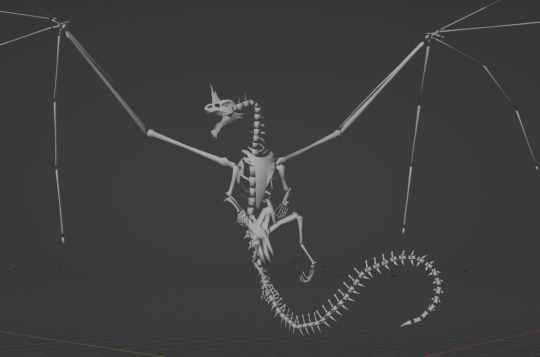

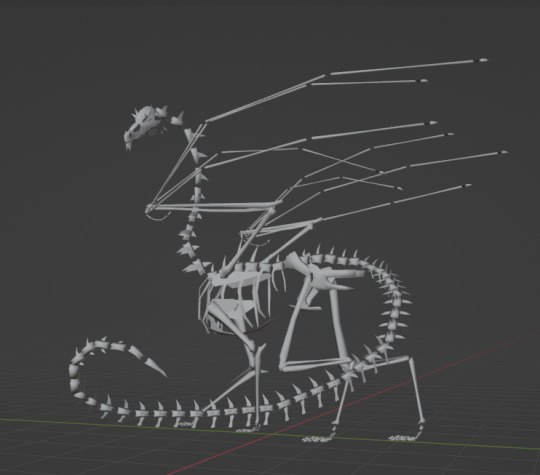
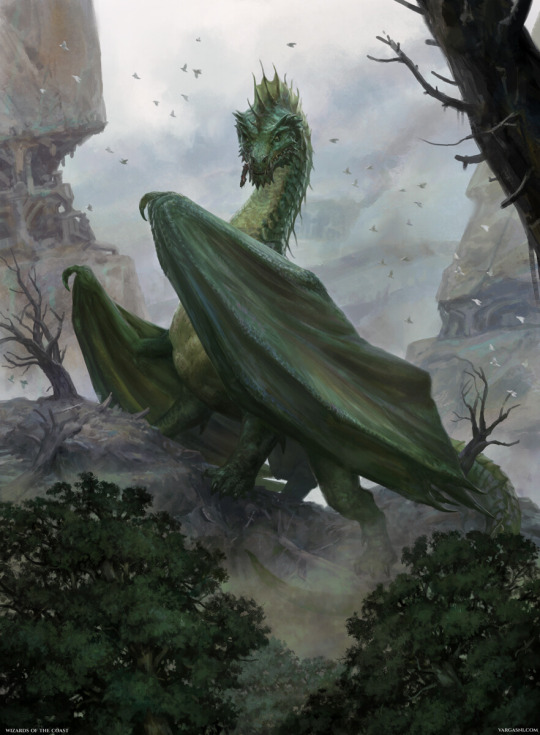


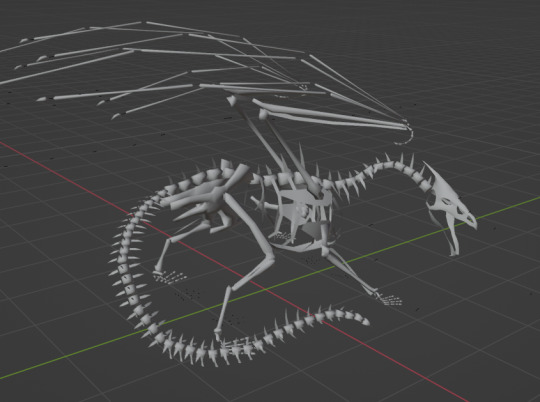
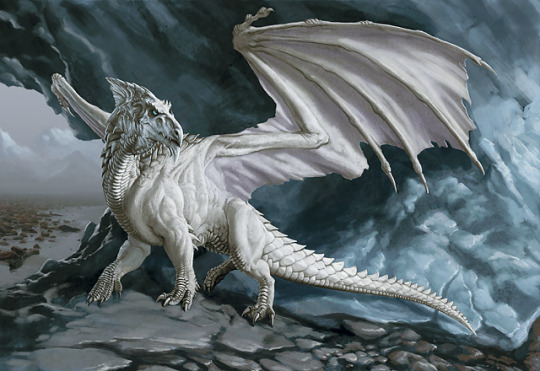
#d&d#art#my art#blender#blender modeling#dragon#dragons#also if you were curious#i like the 4e art for most of the chromatic dragons more than 5e and couldn't find high res versions of 3e dragons#BUT#I despise the 4e green dragon design#so I used Claugiyliamatar instead because I love her ❤️
20 notes
·
View notes
Text

Dragon Highlord Kitiara Uth Matar and Skie by Daniel Govar
#Dungeons & Dragons#D&D#Krynn#Dragonlance#Kitiara Uth Matar#Dragon Highlord#Skie#Blue Dragon#Dragon#Chromatic Dragon#Fantasy#Art#WotC#Wizards of the Coast#Daniel Govar
39 notes
·
View notes